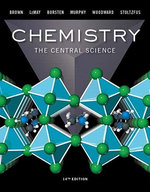?For a spontaneous reaction \(\mathrm{A}(a q)+\mathrm{B}(a q) \longrightarrow
Chapter 20, Problem 20.5(choose chapter or problem)
For a spontaneous reaction \(\mathrm{A}(a q)+\mathrm{B}(a q) \longrightarrow \mathrm{A}^{-}(a q)+ \mathrm{B}^{+}(a q)\), answer the following questions:
(a) If you made a voltaic cell out of this reaction, what half reaction would be occurring at the cathode, and what half-reaction would be occurring at the anode?
(b) Which half-reaction from (a) is higher in potential energy?
(c) What is the sign of \(E_{\text {cell }}^{\circ}\)? [Section 20.3]
Text Transcription:
A(aq) + B(aq) \longrightarrow A-(aq) + B+(aq)
E_cell^{\circ}
Unfortunately, we don't have that question answered yet. But you can get it answered in just 5 hours by Logging in or Becoming a subscriber.
Becoming a subscriber
Or look for another answer
